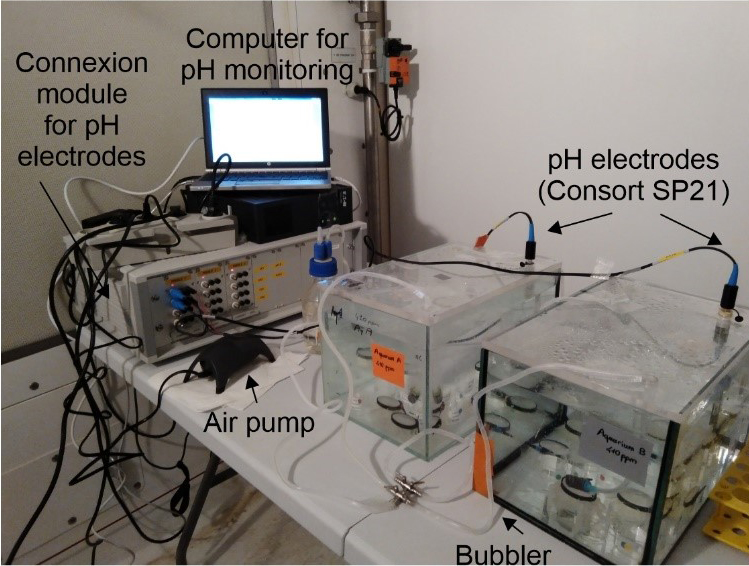Reconstructing the past marine carbon cycle by studying the shells of benthic foraminifera
The past marine carbon cycle can be reconstructed by geochemical indicators measured on foraminiferal shells. In the ECO-FOR project, we explored the use of elemental ratios (e.g. Sr/Ca, B/Ca, Li/Ca) as potential indicators of the seawater carbonate system in several species grown under controlled laboratory conditions.
In the geological history of the Earth, perturbations of the carbon cycle have had important consequences (warming, acidification, deoxygenation). In this context, the ECO-FOR project aimed to provide calibration equations linking elemental ratios measured on foraminifera shells and carbonate system parameters. This will allow a robust reconstruction of past carbonate chemistry and an understanding of carbon cycle and climate interactions and feedbacks. Calibrations were performed on several species of benthic foraminifera grown under controlled experimental conditions allow for the deconvolution of covariant parameters of the carbonate system.
Our experiment was conducted for the first time with a new generation of environmental ecological experiment simulators (Ecolab). The Ecolab is a modular structure consisting of sealed climate chambers where different parameters (temperature, humidity, and pCO2) can be independently and precisely controlled. For this study, we used four climate chambers with four atmospheric pCO2 concentrations (180 ppm, 410 ppm, 1000 ppm, 1500 ppm). In each climate chamber, we placed two seawater aquaria.

In each aquarium, carbonate chemistry was modified to decouple covariant parameters: in one, we varied pH while keeping dissolved inorganic carbon constant and in the other, the opposite. Then, several specimens of different species of benthic foraminifera were introduced into the aquaria. At the end of the experiment, which lasted a few weeks, the living foraminifera were harvested and we determined their survival and growth rate. On the newly formed lodges, we measured elemental concentrations using laser ablation inductively coupled plasma mass spectrometry. The main results to date show that the Sr/Ca elemental ratio is positively correlated with the concentration of dissolved inorganic carbon and bicarbonate ions, with an offset between the different species.
Several results from this study are still being analyzed and valorized, including the relationship between carbonate system parameters and other elemental (e.g. B/Ca, S/Ca, Li/Ca) and isotopic (δ18O and δ13C) ratios. Other projects, following ECO-FOR, are in preparation, notably a project aiming at the application of the calibrations obtained on fossil foraminifera in Quaternary sedimentary archives.
Conducted in partnership with the CEREEP – ECOTRON team (Île de France) and in collaboration with several French (LSCE, LOCEAN) and foreign (NIOZ, Lund University) organizations, the study has been funded by the CNRS-INSU-LEFE-IMAGO-CYBER program (STING project) and the Etoile Montante scheme of the Pays de la Loire region (TANDEM project)
Reference : M. Mojtahid, P. Depuydt, A. Mouret, S. Le Houedec, S. Fiorini, S. Chollet, F. Massol, F. Dohou, H.L. Filipsson, W. Boer, G-J. Reichart, C. Barras. Assessing the impact of different carbonate system parameters on benthic foraminifera from controlled growth experiments. Chemical Geology, 2023. Available online: https://doi.org/10.1016/j.chemgeo.2023.121396
Contact : Meryem Mojtahid, professor at the University of Angers
Acknowledgements to co-authors, funders and colleagues who contributed to the success of the project, in particular, Fatine Rihani (LPG), Sophie Quinchard (LPG), Yann Coupeau (IFREMER) and Carole La (LPG), Claire Rollion-Bard (LSCE), William Gray (LSCE), Claire Waelbroeck (LOCEAN-IPSL) Inge van Dijk (LPG), Shai Oron (University of Haifa).
Published on March 22nd, 2023

